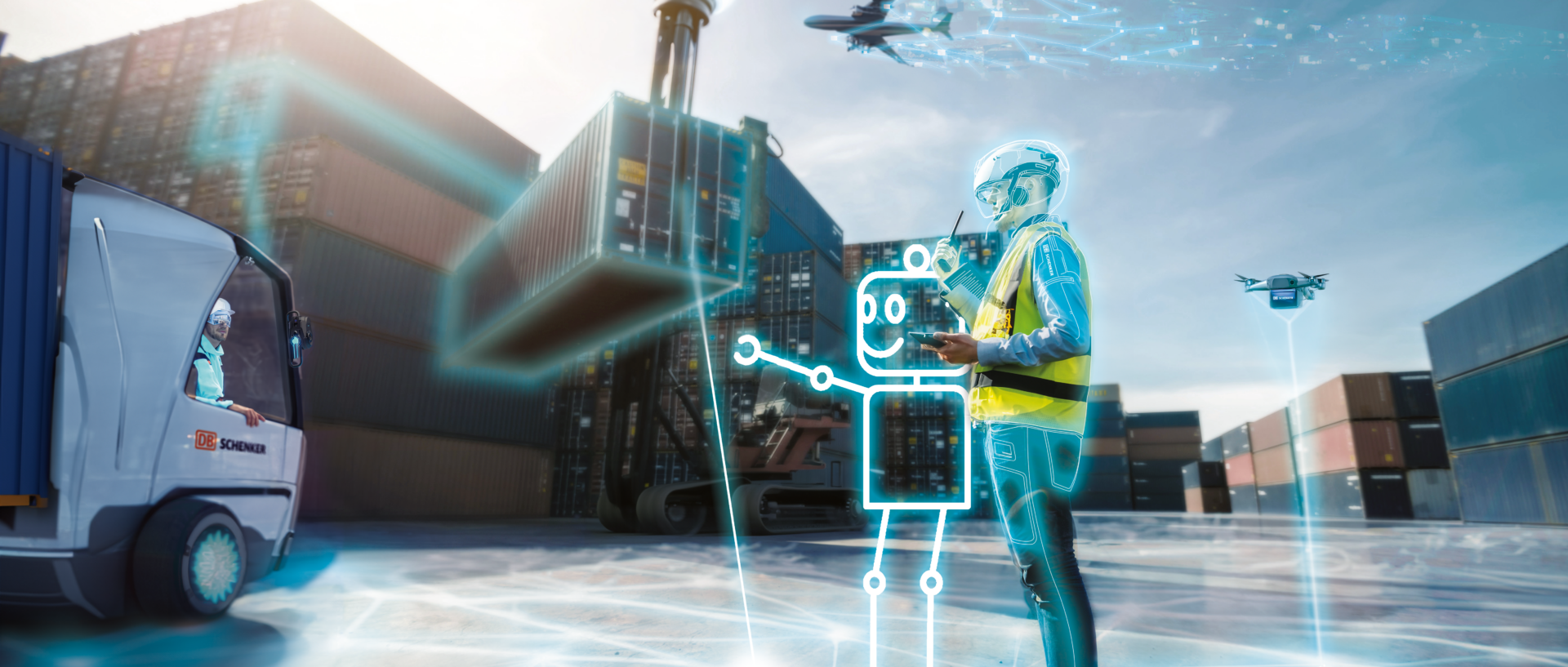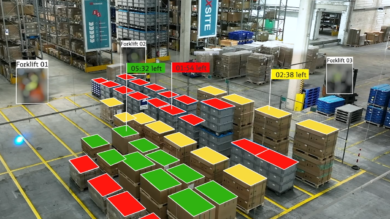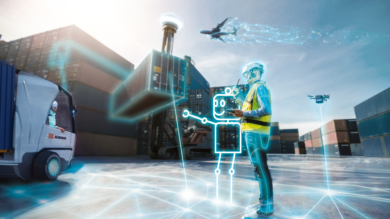In this first part of an exclusive interview series, Logistics Matters talks to Christa Koenen, CIO/CDO of DB SCHENKER and Member of the Board. The topic revolves around the company’s incorporation of Artificial Intelligence (AI) into its business operations. With a commitment to continuous improvement, innovation, and efficiency, DB SCHENKER utilizes AI to optimize logistics processes, enhance decision-making, and create value for its customers.
Have a look below to learn more about AI-mpowering and decode the Cargo Code at DB SCHENKER.
Logistics Matters: How does DB SCHENKER currently incorporate AI into its overall business strategy?
Logistics Matters: Can you provide an overview of a few AI initiatives currently running?
Christa Koenen: At DB SCHENKER, we have several AI initiatives across business units currently running, for example, Territory Allocation, Volume Forecasting, Automated Dispatching, and Computer Vision. Our Terminal Allocation initiative is a solution that optimizes the land transport network by balancing terminal utilization, reducing overall mileage, increasing productivity, and ultimately, achieving significant cost savings. To optimize our volume forecasts, we have developed an intelligent forecasting engine that provides crucial insights into the expected shipment volumes, aiding dispatchers in capacity planning. Furthermore, we have implemented a robust optimization engine that considers various factors, including expected shipment volumes, fleet details, driver information, customer opening hours, access restrictions, road networks, and premium shipment prioritization, to achieve more stops per route with fewer vehicles, reducing overall costs, and minimizing emissions. Moreover, we use computer vision to automate warehouse management by monitoring stock levels in real-time and making the best use of available storage space.
Logistics Matters: How do you believe AI can be leveraged to optimize operations and enhance efficiency?
Logistics Matters: Can you share specific examples of how AI technologies have positively impacted operational efficiency at DB SCHENKER?
Christa Koenen: AI technologies have significantly improved our operational efficiency at DB SCHENKER, particularly in the logistics domain. A prime example is the intelligent optimization of the number of terminals and locations, as well as the allocation of areas to these terminals, using a digital twin of our network. We have developed a tool that integrates various optimization methods, enabling our decision-makers to determine the optimal assignment of postal codes to terminals and identify the optimal number and locations of terminals. This approach considers multiple variables and involves simulating shipment flows, accounting for country-specific processes and constraints to calculate overall transportation costs.
By utilizing mathematical methods from operations research, our solution optimizes our land transport network. This optimization results in balanced terminal utilization, reduced overall mileage, increased productivity, and, ultimately, significant cost savings. Our tool facilitates the analysis of diverse scenarios, including opening new terminals, relocating existing locations, adjusting terminal capacities, and modifying the assignment of postal codes to terminals. The Territory Allocation solution at DB SCHENKER demonstrates the positive impact of AI on our operational efficiency, allowing us to continuously optimize the land transport network to adapt to evolving customer structures and volumes.
Logistics Matters: Can you share the benefits of Artificial Intelligence on an initiative that DB SCHENKER has implemented?
Christa Koenen: Let us take the use of computer vision with AI to enhance efficiency in our warehouse processes as another example. The challenge lies in accurately predicting real-time insights in terminals and warehouses. To address this, an intelligent video analytics engine based on advanced statistical models; is providing crucial insights. Some of these insights are, for example, video analytics at terminal entry gates and pallet tracking for dock-to-stock cycle times in warehouse inbound areas.
The integration of these solutions has resulted in notable efficiency gains. Achieving faster decision-making based on current warehouse activities and improved precision by ensuring tracking and identification of pallets, minimizing errors in stock management are only a few benefits with computer vision.
This insightful first part of our exclusive interview with Christa Koenen, CIO/CDO of DB SCHENKER, opened a door to the transformative integration of Artificial Intelligence into operations. Discover more about the AI-mpowering initiatives at DB SCHENKER and unravel the secrets behind the Cargo Code in the second part of this interview.
Published: January 2024










